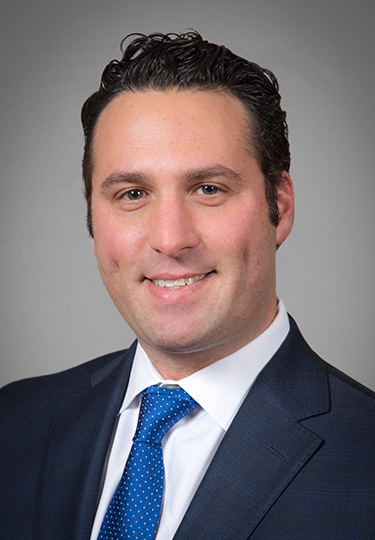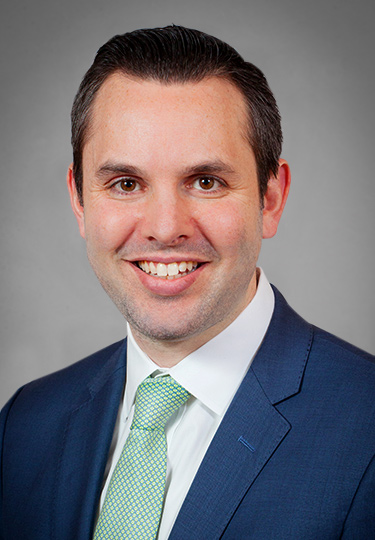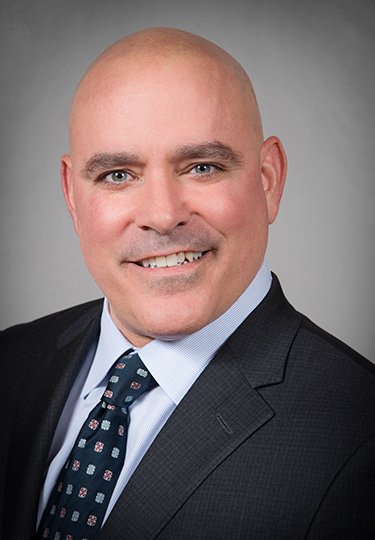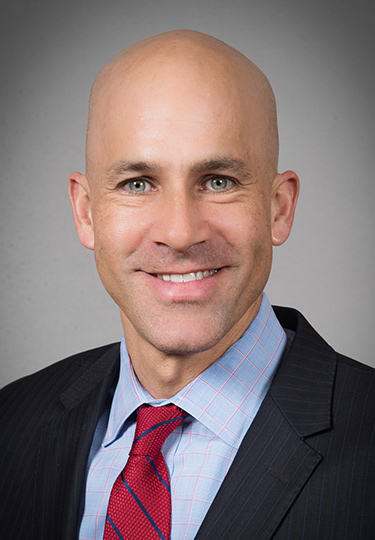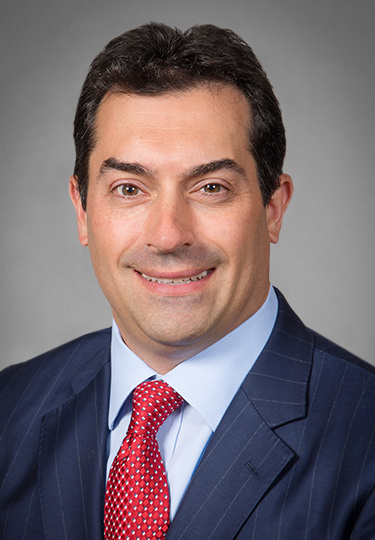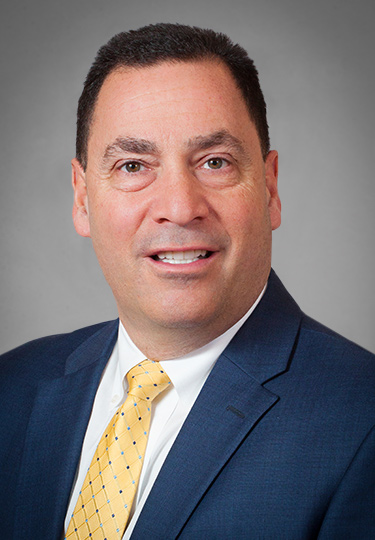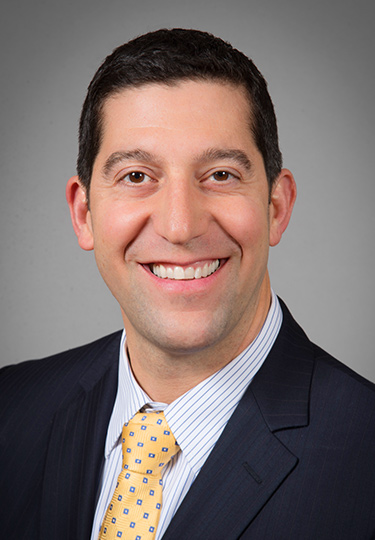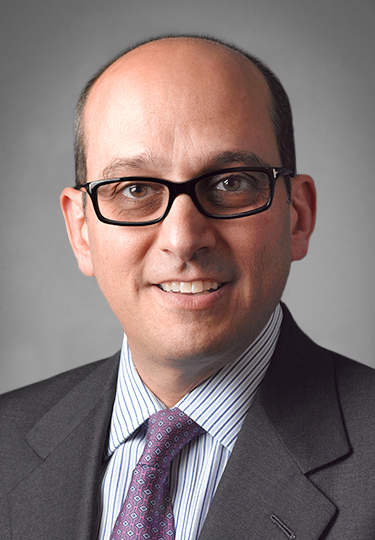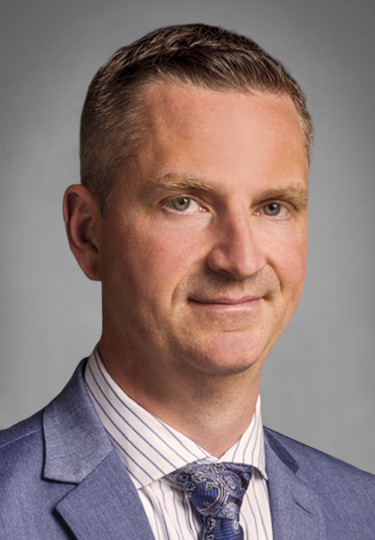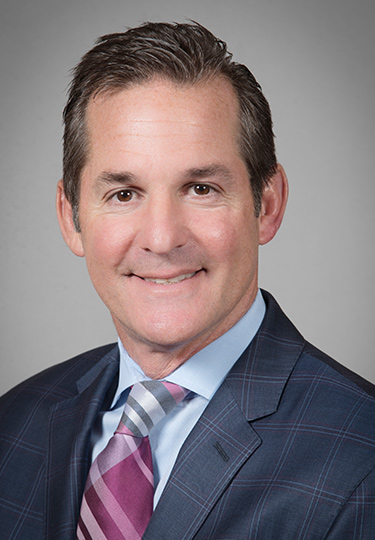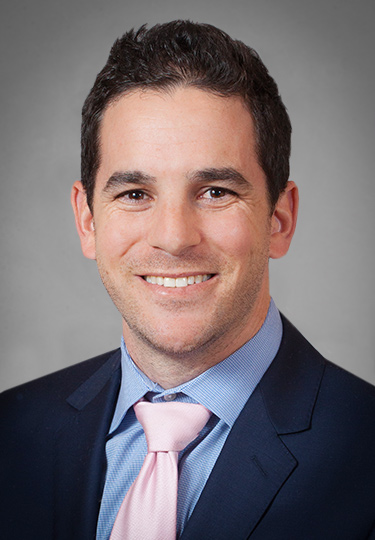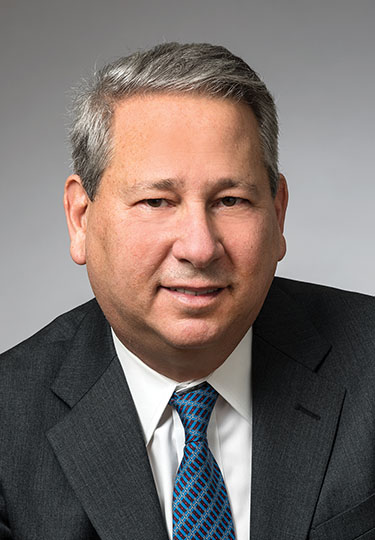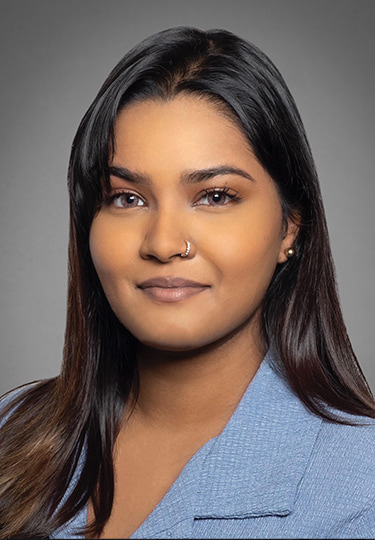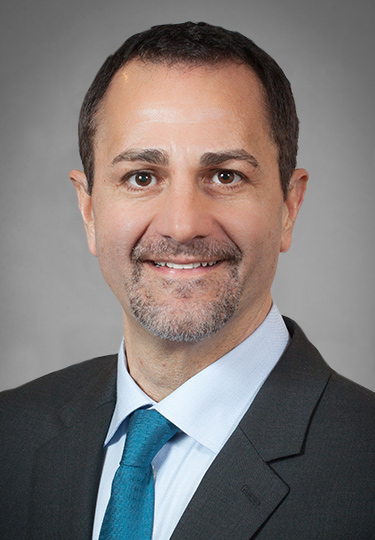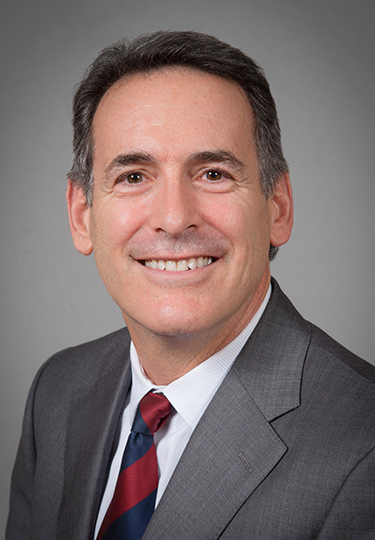Ask a Specialist
Have an orthopedic question?
We’ve got specialists for that.
In Orlin & Cohen’s “Ask a Specialist” series, our top-ranked, fellowship-trained specialists answer patients’ most pressing orthopedic questions—all to help you feel better, faster. Be sure to check back often. We will be regularly adding to the collection of common questions—and answers—you see below.
Hand & Upper Extremities
Treatments from shoulders to fingertips
"What is trigger finger?"
“Trigger finger is caused by a mismatch between the size of the tendons that bend your finger and the sheath around them. It can cause pain, swelling, and stiffness and your finger may “click” or even lock up when you move it.”
"What activities cause trigger finger?"
“In most cases, the cause of trigger finger is unknown. However, repetitive gripping or trauma to the hand may contribute. It is also more common with certain conditions like diabetes and rheumatoid arthritis.”
"What are the common causes of wrist fractures?"
“The most common cause of wrist fractures are falls on an outstretched hand, but they can also occur with higher-level trauma like car accidents and work injuries. In the winter, we see increased broken wrists from slip-and-falls on ice and scaphoid fractures from snowboarding and skiing.”
"How long does it take for a wrist fracture to heal?"
“Fracture healing times vary by type. Most commonly, a wrist fracture involving the end of the radius bone heals in about six weeks. Alternatively, a fractured scaphoid, a small but crucial bone, may take up to three months. With any fracture, soft tissue damage from the impact can prolong recovery.”
"How do I know if I have a wrist fracture or a sprain?"
“If you have wrist pain after an injury, I suggest an orthopedic exam and X-ray. Some broken wrists are obvious with deformity or severe pain, but others, like scaphoid fractures, are subtle and may not be detected by X-ray alone. Prompt care from a specialist is key for accurate diagnosis.”
"How are wrist fractures treated?"
“Most wrist fractures are treated with casts or custom-molded fracture braces, which are waterproof and adjustable for swelling. In some cases, surgery is needed. After the bone heals, most patients attend physical or occupational therapy to address soft tissue injuries and stiffness.”
"When is surgery needed for a wrist fracture?"
“Surgery is reserved for severely displaced wrist fractures, and it’s an option that can speed up recovery from scaphoid fractures. While cast-treated scaphoid fractures take up to three months to heal, minimally invasive surgery can get patients back to full activities and sports in one month.”
Hip
When a replacement is necessary
"How long does a hip replacement last?"
“Most hip replacements last a lifetime, giving patients decades to enjoy a pain-free life.”
"How long does hip replacement surgery take?"
“Most hip replacements take about an hour.”
"How long does it take to recover from a hip replacement?"
“While everyone’s situation is different, initial recovery takes an average of two to four weeks and complete recovery typically takes six months.”
"How long after a hip replacement can I tie my shoes?"
“Everyone’s situation is different, but you should be able to tie your shoes within a month of your hip replacement.”
"What should I not do after a hip replacement?"
“In general, most patients should avoid flexing the hip and externally rotating it for at least two months. But you should discuss your dos and don’ts with your surgeon.”
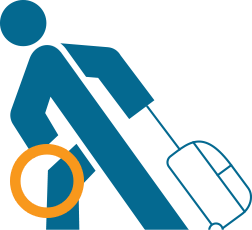
Knee
There are many causes and innovative treatments
"What is arthritis of the knee?"
“Arthritis is a condition that involves the loss of the cartilage on the end of the bones in the knee, like losing tread on a tire. When the cartilage wears out, the bones experience friction against each other and cause pain and swelling; sometimes called “water on the knee.””
"How do you treat arthritis?"
“While arthritis cannot be cured, it can be managed. The goal is to reduce inflammation. We have a variety of options, including oral medications, cortisone shots, and gel injections, which are used to help lubricate the knee. Physical therapy also can be very helpful to keep the knee strong.”
"What activities should I avoid if I have arthritis?"
“I never tell people not to be active, but I do tell them to find activities that don’t bother their knees. It’s the opposite of “no pain, no gain.” Things like deep squats or lunges put a lot of extra stress on the knee. Lower-impact activities are better for folks who have arthritis.”
"What is the meniscus?"
“The meniscus is shock-absorbing cartilage between two bones in the knee, shaped like a C. There are two: One inside and one outside. When a meniscus tears, it results in a piece that moves about like a hangnail and can get pinched and stuck between the two bones—which is what causes pain.”
"Can a torn meniscus heal on its own?"
“Unfortunately, no. A small percentage of tears can be repaired surgically but surgery is not always necessary. Some people do well with physical therapy and anti-inflammatory medicine. But if you feel like something is clicking or catching in the knee, surgery is likely the right choice.”
"What are ligament tears?"
“There are four ligaments in the knee that stabilize the joint. The ACL is the one that is most commonly injured or torn. While ACL tears often require surgery, other knee ligaments can be sprained and may not necessarily require an operation.”
"What does your anterior cruciate ligament—or ACL—do?"
“The ACL supports and stabilizes the knee. It is crucial for knee stability, preventing rotational and anterior knee translation and buckling. Without an ACL, pivoting and cutting activities and sports, navigating uneven ground and slippery surfaces are difficult.”
"Is there anything I can do to prevent my ACL from tearing?"
“There is good evidence that you can significantly decrease your chance of a noncontact ACL tear with proper training, such as the FIFA-11+ warm-up.”
"If I tear my ACL, do I need to have surgery?"
“Generally, if you want to return to pivoting and cutting activities and sports, you should consider surgery. Younger and more active patients usually have better long-term outcomes and function with surgery, rather than nonoperative treatment.”
"Are there different types of ACL surgeries?"
“There are ACL repair and reconstruction options. ACL repair is generally for tears where the ligament is pulled off from the femur (thigh bone) or the tibia (shin bone). In ACL reconstruction, the torn ligament is replaced with a free tissue graft from the patient or a donor.”
"How long does it take to rehabilitate after ACL surgery?"
“In general, you can expect to return to full activities six to nine months after surgery. With an accelerated rehab program, patients usually can run in a straight line, without pivoting or cutting at about 12 weeks post-op.”
"If I do have ACL surgery, can I retear it? How do I prevent that?"
“There is low risk of retearing your ACL. Factors such as age, gender, activity level, type of surgery, and time from surgery to return to full activity can affect this risk. You can prevent retear with post-op rehab and a structured return-to-play program. A knee brace can also help.”
"How long does a knee replacement last?"
“Most modern knee replacements last 25 years or more, which can mean decades of pain-free living.”
"How long does a knee replacement surgery take?"
“Knee replacement surgery takes approximately 60 to 90 minutes.”
"How long does it take to recover from a knee replacement?"
“It takes about three months to a year to feel fully recovered from a knee replacement, but most patients see improvement in both pain and function sooner.”
"How bad does a knee have to be before knee replacement?"
“Having a knee replacement is a very personal decision and it really differs from person to person. At the end of the day, it depends on the severity of the pain and how much it is affecting the individual’s quality of life.”
"How long does pain last after a knee replacement?"
“The first two weeks after a knee replacement can be a bit painful. It is not uncommon to have pain past that point, but it should improve throughout the postoperative period.”
Joint Replacement
Options to make you feel as good as new
"Am I a good candidate for joint replacement surgery?"
“Anyone who has had pain in their joints for an extended period may be a candidate. When over-the-counter medications, exercise, weight loss, and nutrition changes fail to deliver relief, it is time to see a doctor and be evaluated.”
"How long will joint replacement surgery take, and how long will I be hospitalized?"
“Most joint replacements done by a specialist will take between 45 and 90 minutes and the majority of patients are able to leave the hospital the next day. Select patients may need to stay in the hospital for only a few hours and sleep in their own bed that night.”
"Should I expect pain after joint replacement surgery, and how will it be managed?"
“Current pain management techniques and “multimodal” pain control can prevent severe pain after surgery. Most patients tolerate oral medications like Tylenol, anti-inflammatories, and injections that significantly decrease pain and allow for movement just hours after surgery.”
"What are the risks and complications of joint replacement surgery?"
“Joint replacement is safe, with complication rates less than 1%. However, like any lower extremity surgery, there is a risk of blood clots, infections, and nerve injury. There are also specific complications related to individual procedures that you will discuss with your physician.”
"How long will it take to recover from joint replacement surgery?"
“After joint replacement, most people can walk within a few hours, climb stairs and get into their bed within a day or two, and drive within two to six weeks. Many return to some athletic activity in six to 12 weeks, depending on the nature of their surgery and their preoperative functional level.”
"Will I need physical therapy after joint replacement surgery, and for how long?"
“Most patients do some form of physical therapy after their surgery. However, this is not a requirement if the patient is able to do appropriate home exercises on their own to build up mobility and strength.”
"How long can I expect the joint replacement to last?"
“There are a lot of factors that determine how long joint replacements last. There is good research to show that some joint replacements can last 20 to 30 years. As our technology and implants improve, most medical professionals feel this timeframe will continue to increase.”
"What lifestyle changes will I need to make after surgery to protect my new joint?"
“Depending on which joint and the type of surgery, this answer can vary. Most patients will need very few modifications and will be able to return to all their prior activities. The goal of joint replacement is to get patients back to things they couldn’t do because of severe joint pain.”
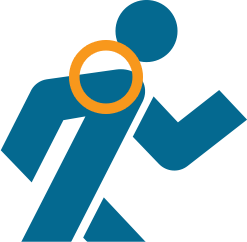
Shoulder
Raise your hand if you can’t raise your hand
"What is the rotator cuff?"
“The rotator cuff of the shoulder is the four muscles that do just that: Rotate the arm to position the hand. The muscles are attached by their tendons to the bone at the top of the arm, which is the head of the humerus.”
"What causes a rotator cuff tear and how does it feel?"
“A rotator cuff tear means that one or more tendons detach from the upper arm bone (humerus). Tears can vary in size and symptom severity. Tears can be sudden, as with an injury, or develop over time. Weakness and pain increase with severity.”
"Do all rotator cuff tears require surgery?"
“A partial rotator cuff tear may cause minimal discomfort or limitations. Treatments include rest, anti-inflammatories, physical therapy, or even injections. A full tear (tendon detachment from the bone) can be quite painful and limit function, and often requires surgery.”
"Why should I choose a fellowship-trained shoulder specialist to treat my rotator cuff?"
“When your doctor is specialized, they have greater training and expertise in your area of concern, and more experience with surgical techniques and post-op care. This can mean a more successful outcome and recovery.”
"How does my doctor determine if I need rotator cuff surgery?"
“An MRI is often used to confirm if a rotator cuff is torn, which tendons are involved, the tear pattern, and the condition of the muscle. Assessing these and other factors like patients’ age, age and severity of the tear, and arm dominance help determine if surgery is needed.”
"What can I expect with rotator cuff surgery?"
“Following rotator cuff surgery — typically a one-hour, same-day, outpatient procedure — your arm will likely be in a sling or cryotherapy device for 2-6 weeks. Some type of pain medication may be recommended. But each tear is unique, so treatment is customized to each patient.”

Sports Medicine
Get back in the game with our specialists’ care
"What is the most common sports injury?"
“The most common types of sports injuries are strains and sprains. A strain is a muscle injury that happens when you stretch or tear a muscle by overextending it. A sprain is a stretch or tear of a ligament near a joint, like an ankle, knee, elbow, shoulder, or wrist.”
"What are the causes of sports injuries?"
“Sports injuries can happen for a variety of reasons. The most common causes of sports injuries are misuse (caused by improper form), overuse (using a body part repeatedly without adequate rest), and direct impact (a contact injury like a fall or a hit).”
"How do I deal with sports injuries?"
“Proper technique, stretching, and strength and endurance training can help prevent sports injuries. Learn how to reduce the risk. If you are injured, never play through pain. Instead, seek care from an orthopedic specialist like Orlin & Cohen: Request an appointment.”
"How do I recover from a sports injury?"
“Seek early intervention and treatment. The RICE method – rest, ice, compression and elevation – is effective for muscle strains and ligament/joint sprains. For fractures and chronic pain, a doctor might suggest physical therapy, pain management, and, if necessary, surgery.”
"If I do have surgery, can I retear my UCL? How do I prevent it?"
“While very rare, re-tears do happen. To help prevent them, follow all postoperative instructions including physical therapy and formal return-to-sport program. Maintaining proper biomechanics and following things like pitch count guidelines also are crucial.”
"When can I throw again following UCL surgery?"
“You can start a formal interval throwing program around 4 months after a reconstruction, and around 10 weeks after a repair. For pitchers, the goal is to return to play in 9-18 months after reconstruction, or about 6-9 months after repair.”
"Is there anything I can do to prevent my UCL from tearing?"
“UCL injury prevention can be quite successful. Avoiding overuse, monitoring and following pitch-count guidelines, and maintaining arm, shoulder, and hip flexibility can help limit the risk of injury. The thrower’s 10-exercise program is a mainstay of UCL injury prevention.”
"Are there different types of UCL surgeries?"
“The surgical options are repair with an internal brace or UCL reconstruction—aka Tommy John surgery. In reconstruction, we drill tunnels into the elbow to replace and support the ligament with the graft. In a repair, the ligament is stitched and supported by an internal brace made of a tape suture.”
"What does your ulnar collateral ligament – or UCL – do?"
“The UCL stabilizes the inside of the elbow. It sees significant stress with overhead activities, such as pitching a baseball or throwing a javelin. While most UCL tears are due to overuse and are quite common in throwers, they also can happen traumatically.”
"If I tear my UCL, do I need to have surgery?"
“While surgical repair or reconstruction is an option, most UCL injuries do not require surgery. Some partial UCL tears may heal without surgery. Platelet-rich plasma, or PRP injections, may help the non-operative healing process.”
"How can I avoid knee injuries when cycling?"
“The best way to avoid knee injuries while cycling is to ensure that the seat is at the appropriate height. It’s also key to wear the proper shoes and perform daily stretching and warm-ups. Just like any workout, gradually increasing your intensity lessens the risk of injury.”
"What should I consider when transitioning from indoor to outdoor running?"
“Indoor running happens in a controlled environment. When transitioning to outdoor runs, you must be prepared for the elements. Preplan your route, be aware of elevation and terrain changes, wear bright clothing, and run against traffic so you can see vehicles on the road.”
"How can I protect my ankles when playing basketball or soccer?"
“Strength training and stretching are vital to ankle injury prevention. Ankle braces can also help but may limit mobility and take some getting used to. For athletes, having your ankle taped by a certified athletic trainer may reduce injuries.”
"How much rest should I incorporate into my workout routine?"
“Rest is very important. Your body needs to recover after working out. While one or two days “off” per week is encouraged, a varied routine is also crucial. A good balance of cardio and weight training will decrease injuries by not overworking one or more muscle groups.”
Acupuncture
Ease pain and restore wellness, naturally
"What is acupuncture?"
“Acupuncture is a traditional Chinese practice where thin needles are placed at specific points throughout the body to relieve pain and restore wellness. Modern medical practitioners have begun adapting the practice to treat digestive, respiratory, neurological, and orthopedic conditions.”
"How does acupuncture work?"
“Acupuncture balances the flow of energy – also known as chi or qi – through the pathways of your body. It’s believed that by inserting very thin needles at strategic points along your body’s pathways or meridians, practitioners can balance your energy flow for improvements to your overall health.”
"How is acupuncture being applied today?"
“Practitioners view acupuncture points as sites to stimulate nerves, muscles, and tissue – offering orthopedic benefits and overall wellness. The biochemicals released from acupuncture trigger a response from the body’s pain receptors to promote natural healing.”
"Does acupuncture hurt?"
“Acupuncture needles are very thin, so most people feel little or no pain. They typically experience a “chi sensation,” (dull aching, tingling, and pressure) which is normal. These feelings lessen over time, and generally, patients leave sessions feeling energized or relaxed.”
"Does insurance cover acupuncture?"
“Many insurance plans do cover acupuncture. At Orlin & Cohen, our orthopedic acupuncture treatments are delivered by Dr. Barry Rubin, a board-certified physiatrist and certified acupuncturist licensed in New York State. Orlin & Cohen accepts most major health insurance plans.”
Clinical Trials
Pioneering new treatments
"What is the purpose of a clinical trial?"
“Clinical trials help doctors and researchers learn more about how to prevent, detect, or treat diseases and conditions with the intent of improving care. The goal of clinical trials is to test the safety and efficacy of new treatments like drugs, surgeries, devices, and more.”
"What are the potential benefits of participating in a clinical trial?"
“Participating in a clinical trial can help patients and researchers. The benefits vary with each study. Patients can receive the newest treatments and provide insight into diseases or conditions and improve their quality of life. Healthy volunteers can also take part.”
"What are the potential risks or side effects of participating in a clinical trial?"
“Each clinical trial has its own risks or side effects. If you are asked to participate in a clinical trial, you should review these risks with your doctor. If you enroll, you will be closely monitored. Researchers take every measure to prioritize your safety and well-being.”
"What is the duration of a clinical trial?"
“Clinical trials can last weeks or sometimes years. Prior to joining the study, your doctor will review the timeline with you including the start date, each visit requirement, and an anticipated end date.”
"Can I withdraw from a clinical trial if I change my mind?"
“Participation in clinical trials is voluntary. You can change your mind at any time or choose not to participate at all. You might have to contact your study doctor by mail or other methods to let them know you no longer wish to continue in the trial.”
"How will my privacy and confidentiality be protected during the clinical trial?"
“All clinical trials must adhere to federal and local ethical guidelines that are meant to protect your privacy, maintain confidentiality, and preserve the integrity of the study. You will have the ability to review an informed consent form that explains the study thoroughly.”
"How are clinical trials monitored?"
“Most clinical trials are approved and monitored by the Institutional Review Board (IRB); a committee of physicians, statisticians, and members of the community who ensure trials are ethical, risks are minimal relative to potential benefits, and participants are protected.”
CT Scans
How to prepare and what to expect
"How should I prepare for a CT Scan?"
“CT scans involve minimal prep and, in most cases, no fasting. Wear comfortable, loose-fitting clothing and remove jewelry, hair pins, glasses, and hearing aids. While CT scans don’t use magnets, these items can affect image quality and should be removed if possible.”
"How long does a CT scan take?"
“On average, a CT scan takes approximately 10 minutes. However, if the CT is for surgical planning, like a hip or knee replacement, the scan may take 15 to 20 minutes.”
"What is a CT scan used for?"
“A CT scan offers more detailed images of bones and soft tissue than an X-ray alone. At Orlin & Cohen, we use CT scans for faster diagnosis, procedural guidance during pain management treatments, pre-op surgical planning, and post-procedure confirmation.”
"When should I get a weight-bearing CT scan?"
“Your specialist may suggest a weight-bearing CT scan to assess foot and ankle conditions. That’s because these scans provide more detail than X-rays and conventional CT images and show how the musculoskeletal system performs under the pressure of your body’s weight.”
"What are the benefits of a weight-bearing CT scan?"
“A weight-bearing CT scan provides a more detailed three-dimensional image with higher spatial resolution, allowing your specialist to diagnose conditions faster and more accurately, all of which help them plan the most effective treatment possible.”




